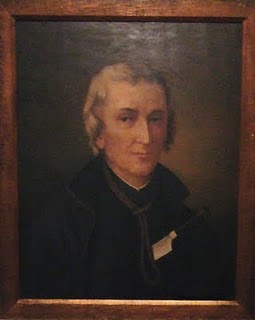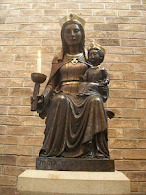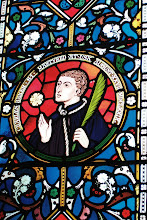 Year in and year out, thousands of people died from Malaria, the “ague” mentioned in nine of Shakespeare’s plays. Then, about 1630, Jesuit missionaries working in Peru learned that the bark of a certain tree cured malaria. This bark was known to the natives as “quinquina”. (From “quinquina” comes the word “quinine”.) Jesuit missionaries sent this bark to Rome and Jesuit Cardinal, John de Lugo, was convinced of its value and became a strong supporter and promoter of quinine. Through the Jesuits, this “bark of barks” was distributed through much of Europe. Because the Jesuits were largely responsible for popularising this remedy, it became widely known as “Jesuits Powder”. In 17th century England, hatred and mistrust of Catholics was such that people would even refuse treatment for illness. As one writer put it, “The Protestants scented a Jesuit plot; the bark was an insidious poison which the Jesuits had brought to Europe for the purpose of exterminating all those who had thrown off their allegiance to Rome.”
Year in and year out, thousands of people died from Malaria, the “ague” mentioned in nine of Shakespeare’s plays. Then, about 1630, Jesuit missionaries working in Peru learned that the bark of a certain tree cured malaria. This bark was known to the natives as “quinquina”. (From “quinquina” comes the word “quinine”.) Jesuit missionaries sent this bark to Rome and Jesuit Cardinal, John de Lugo, was convinced of its value and became a strong supporter and promoter of quinine. Through the Jesuits, this “bark of barks” was distributed through much of Europe. Because the Jesuits were largely responsible for popularising this remedy, it became widely known as “Jesuits Powder”. In 17th century England, hatred and mistrust of Catholics was such that people would even refuse treatment for illness. As one writer put it, “The Protestants scented a Jesuit plot; the bark was an insidious poison which the Jesuits had brought to Europe for the purpose of exterminating all those who had thrown off their allegiance to Rome.”Dean of Medicine Emeritus at Brown University, Stanley Aronson, wrote an article entitled “Religious Bigotry Got In The Way of Controlling Malaria”. In this article he states, “The arrival of quinine to Britain was delayed by religious prejudice, since quinine had been so closely affiliated historically with the Jesuits.” While fighting in Ireland, Oliver Cromwell became ill with malaria. He recovered from this initial attack but in 1658, in southern England, he suffered another attack. This attack was so severe that his physicians recommended that he be treated with an herbal medicine derived from the mysterious bark. Cromwell’s Protestant religion, with its resolutely anti-Catholic fervour, obliged him to refuse any ‘papist’ medication. Alas, on 3rd September 1658, at the age of 59, the Lord Protector died of - bigotry?
 In 1678, the same year that the odious Titus Oates dispensed his venom, a malaria epidemic struck London and the King, Charles II, was stricken. A man named Robert Talbor had enjoyed a certain amount of success in the cure of malaria and the King insisted that he treat him. With his secret mixture, Talbor did cure the King and, when the French Royal Family was afflicted with the disease, Charles sent Talbor to Paris to serve Louis XIV. Again, Talbor’s secret mixture was successful. In gratitude, Louis offered Talbor 3,000 gold crowns and a generous pension for the right to publish the ‘secret’ upon Talbor’s death. Talbor agreed.
In 1678, the same year that the odious Titus Oates dispensed his venom, a malaria epidemic struck London and the King, Charles II, was stricken. A man named Robert Talbor had enjoyed a certain amount of success in the cure of malaria and the King insisted that he treat him. With his secret mixture, Talbor did cure the King and, when the French Royal Family was afflicted with the disease, Charles sent Talbor to Paris to serve Louis XIV. Again, Talbor’s secret mixture was successful. In gratitude, Louis offered Talbor 3,000 gold crowns and a generous pension for the right to publish the ‘secret’ upon Talbor’s death. Talbor agreed.
 In 1678, the same year that the odious Titus Oates dispensed his venom, a malaria epidemic struck London and the King, Charles II, was stricken. A man named Robert Talbor had enjoyed a certain amount of success in the cure of malaria and the King insisted that he treat him. With his secret mixture, Talbor did cure the King and, when the French Royal Family was afflicted with the disease, Charles sent Talbor to Paris to serve Louis XIV. Again, Talbor’s secret mixture was successful. In gratitude, Louis offered Talbor 3,000 gold crowns and a generous pension for the right to publish the ‘secret’ upon Talbor’s death. Talbor agreed.
In 1678, the same year that the odious Titus Oates dispensed his venom, a malaria epidemic struck London and the King, Charles II, was stricken. A man named Robert Talbor had enjoyed a certain amount of success in the cure of malaria and the King insisted that he treat him. With his secret mixture, Talbor did cure the King and, when the French Royal Family was afflicted with the disease, Charles sent Talbor to Paris to serve Louis XIV. Again, Talbor’s secret mixture was successful. In gratitude, Louis offered Talbor 3,000 gold crowns and a generous pension for the right to publish the ‘secret’ upon Talbor’s death. Talbor agreed.In 1681, at the age of 42, Robert Talbor died. King Louis immediately released Talbor’s secret formula. In 1682 it was published in London and there must have been shock in medical circles there. Robert Talbor had once written a widely read document in which he stated, “Beware of all palliative cures and especially of that known as ‘Jesuits Powder’." What was the secret of Talbor’s successful medicine? All along, the cunning Talbor had been mixing opium and various wines with ‘Jesuits Powder’! As Aronson wrote, “More than 350 years have intervened since quinine was introduced as an effective therapy for the intermittent fevers known as ague or malaria. The lengthy span makes it difficult, therefore, for historians to determine which 17th century fever was more intense, religious bigotry or malaria.”








.JPG)

.JPG)






How interesting! I enjoyed reading this :)
ReplyDeleteThis made for a fascinating read! I always thought ague was the common cold - too many historical romance novels when I was young I'd say ;)
ReplyDelete"...died of - bigotry?" Cracked me up!
ReplyDeleteInteresting!!!! Very interesting post!!! Thank you! Cathy
ReplyDeleteHello Friends
ReplyDeleteThank you all for your very welcome comments. I am pleased that you found this post interesting. I thought it would give a bit of an insight into the times in which St David Lewis lived.He was born in 1616 and died in 1679 so it would all have been part of the fabric of his life. They were certainly difficult times.
Mary, like you, I thought that 'ague' was their name for a cold or the flu! It was only when I was looking up material for this post that I discovered it was another name for malaria.
Thanks Sarah, Mary and Grandma K, and God bless you all.
"Cromwell’s Protestant religion, with its resolutely anti-Catholic fervour, obliged him to refuse any ‘papist’ medication. Alas, on 3rd September 1658, at the age of 59, the Lord Protector died of - bigotry?"
ReplyDeleteHe was barking up the wrong tree !!!
Thanx for this very informative and interesting article. The statue of Oliver Cromwell you have in the photo above is in St Ives Cambridgeshire. The place of his birth I believe. I remember visiting there many years ago ... oh the memories, the memories !!!
God bless.
Hello Victor
ReplyDeleteYou are so right - Oliver was definitely "barking up the wrong tree"! It has also been suggested that he must have been just plain "barking" to refuse medical aid. O K, that's enough at poor Oliver's expense. I am sure he meant well and, as my dear mother used to say, "Ah, sure, he was some mother's little baby once".
Yes, you are right again, the photo was taken in St Ives, Cambridgeshire. Well spotted.
Thank you for looking in and God bless you.